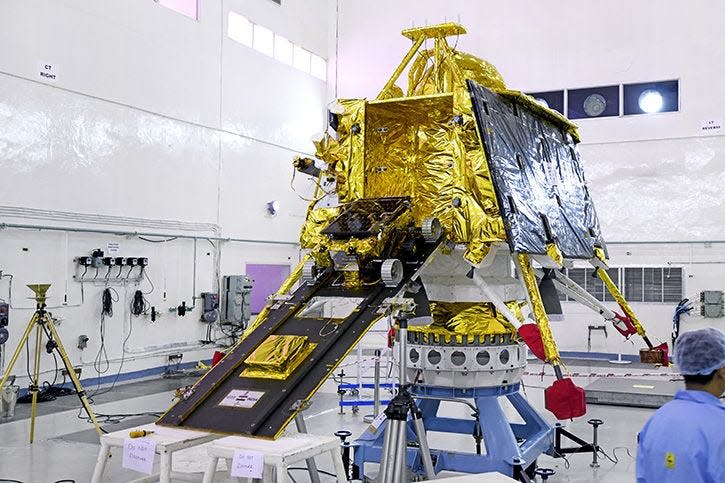India's adorable, dog-sized moon rover did its first science on the moon by shooting powerful laser beams at the surface
India's moon rover made its first scientific observation near the lunar south pole.
The 57-pound rover is called Pragyaan — a Hindu name meaning one who possesses wisdom.
Pragyaan has confirmed the presence of sulfur as well as detected other elements.
India made history by becoming the first country to land successfully near the lunar south pole. And its lunar rover wasted no time in rolling out to make its first scientific observations.
On Tuesday, the Indian Space Research Organization announced on its website that the moon rover had confirmed the presence of sulphur. And preliminary analyses also suggest the presence of aluminum, calcium, iron, chromium, and titanium.
Suffice it to say, the rover's been busy. This adorable rover is called Pragyaan — a Hindu name meaning one who possesses greater knowledge and wisdom.
Pragyaan weighs 57 pounds, about the size of a small German shepherd or bull terrier, and it's spending two weeks driving where no robot or human has been before.
Pragyaan's science could be critical for learning how to mine moon water — a goal every moon-minded nation is eyeing.
The rover may be small and cute, but India's new moon mission "definitely puts them on the international stage as an emerging space power," Robert Braun, head of space exploration at Johns Hopkins Applied Physics Laboratory, told Insider.
What will India's moon rover do next?
It's equipped with a laser and an alpha-particle beam to help it study the composition of the lunar south pole region, which is of particular interest.

The lunar south pole is thought to be the most water-rich region on the moon. That's critical since water ice could be mined to produce breathable oxygen for future crewed lunar bases, as well as hydrogen and oxygen for rocket fuel that could propel future missions to Mars and beyond.
The rover will also use its RAMBHA and ILSA payloads on board to study the lunar atmosphere as well as dig up samples for additional analysis of the surface's composition, per Times of India.
But it was the rover's Laser-Induced Breakdown Spectroscopy (LIBS) instrument that ultimately made the first-ever measurements of the lunar south pole region's composition, ISRO reported. The laser fires intense pulses at the lunar surface, which generates an extremely hot plasma.
That's where a trick of physics comes in handy: Each element on the periodic table emits a unique set of wavelengths of light. Scientists can study the light from the plasma to identify those wavelength sets and determine the chemical make-up of the stuff on the moon.
A moment for the history books
India is the fourth country — after Russia, the US, and China — to land on the moon.
"It's a huge achievement for the whole nation," Braun said. "Last time they got to the playoffs, if you will, and this time they won the Super Bowl."
"Everyone in the space community is joining with the nation of India, and their talented engineers and scientists, and celebrating their success and this achievement," he added.
Correction: August 28, 2023 — An earlier version of this article misstated Robert Braun's title. He is head of space exploration at Johns Hopkins Applied Physics Laboratory, not head of a Space Exploration Center there. This story has been updated. It was originally published on August 23, 2023.
Editor's note September 1, 2023: This article has been updated to clarify that India's spacecraft landed in the lunar south pole region, not on the point of the lunar south pole.
Read the original article on Business Insider


